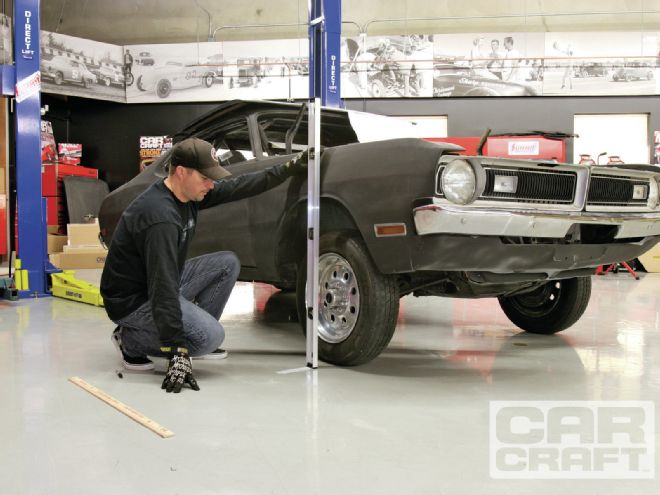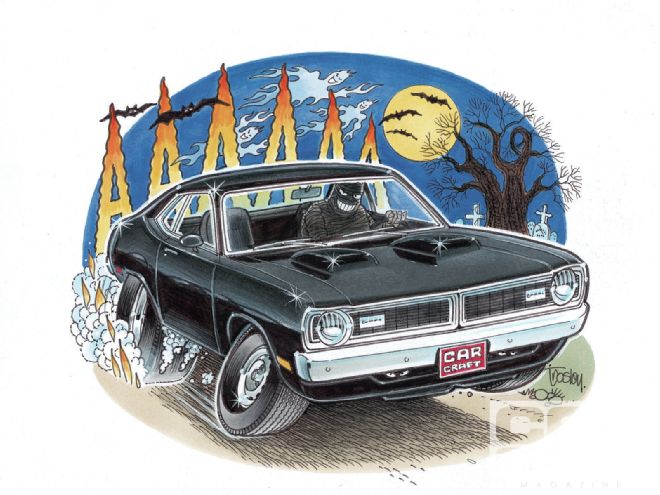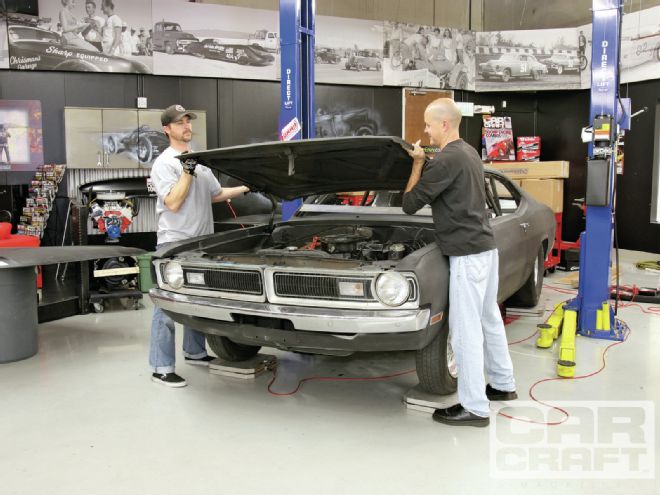
Here is the plan. We want to run 9s in the quarter-mile, look really cool, and drive this car on the street as much as possible. The last two are simple enough, but the first one is going to take some finesse if we want to keep this thing fast for beer money. Using the calculation for quarter-mile times, RWHP = (MPH/234)3 x weight, our 2,600-pound Demon’s engine needs to make about 750 flywheel horsepower to go 145 mph in the quarter-mile. Or we can lighten the car.

When we introduced this Demon in the Mar. ’11 issue, we mentioned that it was a back-halved car with a ’cage and some good chassis work that seemed to have stopped at the firewall. Everything forward of that was stock. We had peeked under the car and discovered a Chris Alston Chassisworks four-link frame package with Battle Cruiser suspension that had already been installed. So naturally, we called Mr. Big himself to see what we were up against.
“There are thousands of these (back-halved) cars out there, so we make a front frame kit that gets rid of the stock front suspension,” Alston says. In addition to deleting the torsion bars and the related issues, Alston claims his A-arm frame kit will remove up to 300 pounds from the front end of the car, connect to the rear subframe, and make things work the way they were intended. To further the weight loss, we are also going to add some fiberglass parts from Glasstek and other lightweight goodies. Using totally hypothetical numbers, if we can drop 400 pounds off the car, we can reduce the required engine output to about 630 hp. That is a number we can achieve from a junkyard 5.7L Hemi with a shot of nitrous or a blower and still run it on pump gas.
 To keep an accurate record of the car’s weight loss, we put the Demon on the scales and removed the hood and trunk lid, replacing them with fiberglass parts from Glasstek. The base weight was 2,615 pounds with about a 60/40 split to the front of the car. The fiberglass parts reduced the weight an additional 60 pounds for a total of 2,555.
To keep an accurate record of the car’s weight loss, we put the Demon on the scales and removed the hood and trunk lid, replacing them with fiberglass parts from Glasstek. The base weight was 2,615 pounds with about a 60/40 split to the front of the car. The fiberglass parts reduced the weight an additional 60 pounds for a total of 2,555.
We can already imagine rolling through the drive-thru on wrinkle walls and blasting through the quarter-mile, but first we need to do the math and order the front frame system. Here’s how to do it.
Street or Strip?
There are many choices to make when you open a Chassisworks catalog, so what to pick? If you are going to drive the car on the street 90 percent of the time and drag race 10 percent of the time, order the 2x3 boxed frame with 0.120 wall thickness. It automatically comes with the stronger Mustang II rack-and-pinion steering and forged spindle. If you are like us and plan to trailer the car for race days, then cruise to the drive-in once a month, get the 2x3 with the 0.083 wall thickness and the lighter Pinto rack-and-pinion and fabricated spindles. In our case, we also chose the 2x3 over the 15⁄8-inch round tube front frame because the 2x3 is easier for the home builder to work with, and the Demon already has a 2x3 frame in the rear of the car. Since the front of the frame is only going to sit 6 inches off the ground, we also avoided the drop spindles. Finally, if you are not comfortable with suspension geometry to the point where you can accurately weld your own fixtures, buy the prewelded kit instead.